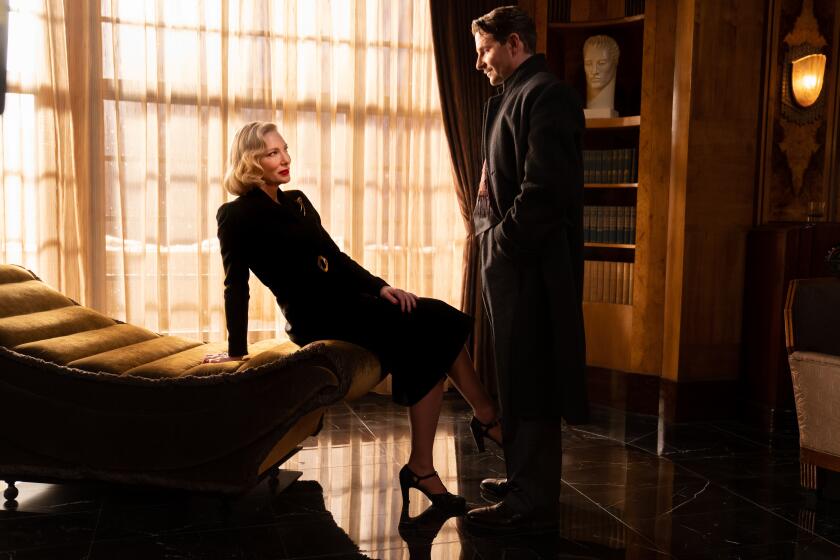How newly married Guillermo del Toro and Kim Morgan found the dark heart of ‘Nightmare Alley’
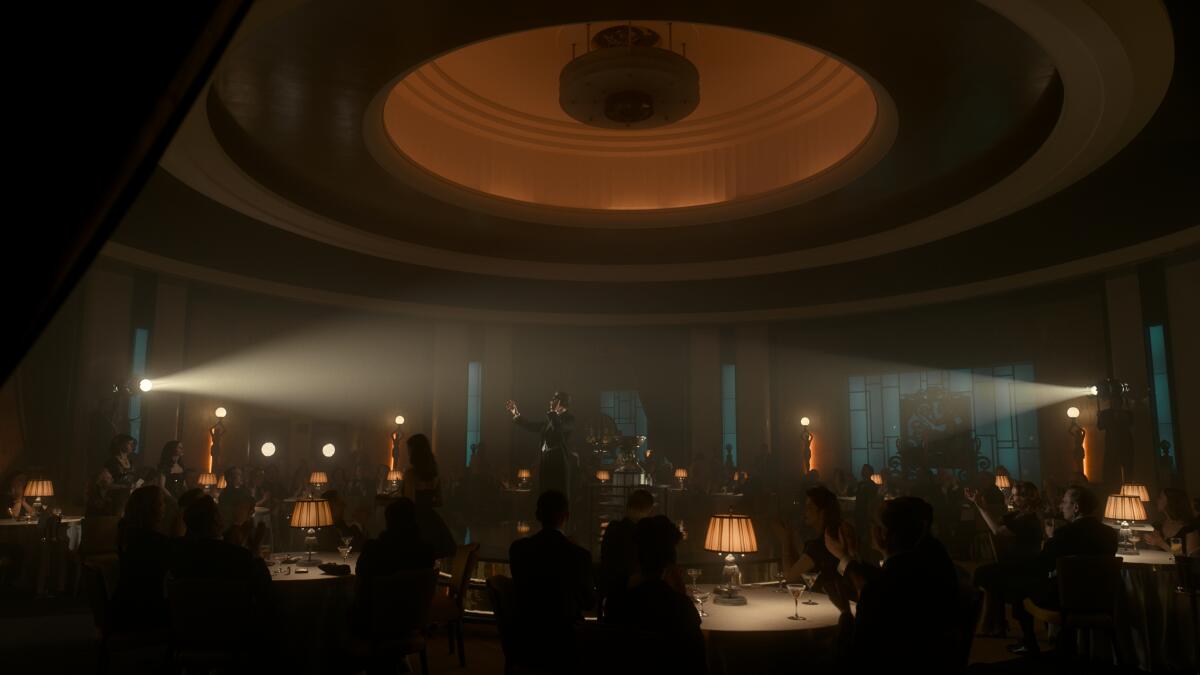
- Share via
Filmmaker Guillermo del Toro’s last movie, “The Shape of Water,” was a box-office hit that won four Academy Awards, including director and best picture. The film was a delicate, delightfully weird love story between a cleaning woman and a fish-man kept at a top-secret government facility. His follow-up, “Nightmare Alley,” is a bleak tale of carnies, grifters and a dishonest society that creates a far more despairing portrait of the world.
With a similar visual style to Del Toro’s previous work, beautifully lit and finely crafted, “Nightmare Alley” steers the veteran filmmaker into new territory. The departure includes the fact that Del Toro co-wrote the screenplay with film journalist and historian (and new wife) Kim Morgan.
Cate Blanchett and Rooney Mara co-star in Guillermo del Toro’s bleak and luxuriant adaptation of William Lindsay Gresham’s previously filmed 1946 novel.
“When ‘Shape of Water’ came, it was responding to a completely different series of impulses,” said Del Toro. “But by the end of that campaign and at the end of the process with the movie, the world was in an almost epistemological crisis about truth and lies and populist discourse and how to distinguish a system of reality that just reinforces what you believe and that doesn’t challenge you into seeing the world. And these were things that were very heavy.”
Del Toro acknowledged that this more serious frame of mind set the stage for “Nightmare Alley.”
“Visually there are common threads with other movies and the style is common with other movies, but at the same time, to me it became about being moved by images that are beautiful, but also feel brutal,” said Del Toro, mentioning American painters such as Thomas Hart Benton, Grant Wood, Andrew Wyeth and Edward Hopper. “I wanted to capture images that didn’t have whimsy. The images were beautiful, but not whimsical. And that is new because I have always depended on the — I sound like Blanche DuBois — I’ve always depended on the whimsy of strange monsters. And to abandon the whimsy and trying to preserve the beauty was a new exercise for me.”
In the film, Bradley Cooper plays Stanton Carlisle, a drifter on the run from a mysterious past who falls in with a traveling carnival. He makes himself a fast study of the work of the mentalist Zeena (Toni Collette) and her husband, Pete Krumbein (David Strathairn), picking up the tricks of their trade. He takes off with another carnival performer, Molly (Rooney Mara), and starts his own act, finding success at big city nightclubs. With the aid of a shady psychoanalyst, Dr. Lilith Ritter (Cate Blanchett), he begins to fleece powerful local swells for money. He eventually crosses paths with the fearsome tycoon Ezra Grindle (Richard Jenkins), and then Stanton’s plans begin to falter, leading to a desperate end.
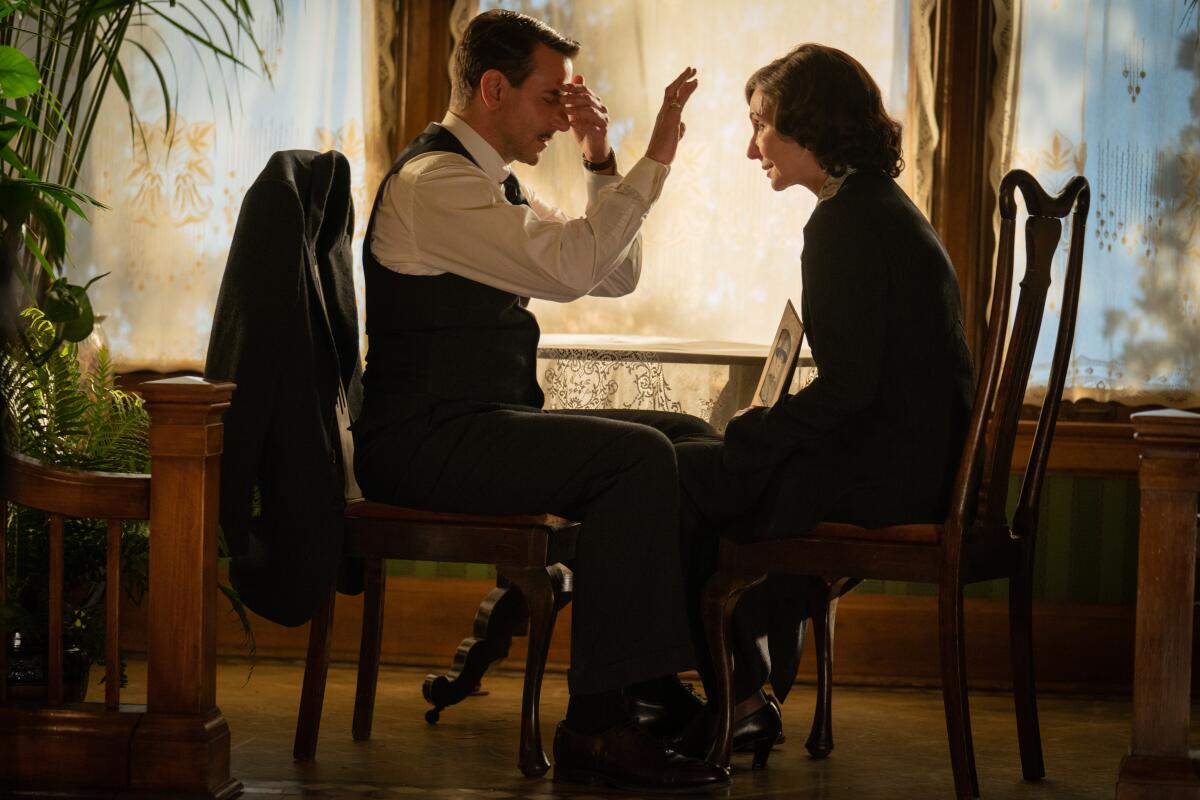
The film is adapted from the 1946 novel by William Lindsay Gresham that was previously made into the 1947 film directed by Edmund Goulding and starring Tyrone Power. Set in the late 1930s to early 1940s, Del Toro’s version shifts hard from the dusty, ramshackle world of the carnies, honest about their dishonesty and who they really are, to the sleek society world of the city where no one is as they seem and everyone is out only for themselves. Whether through tarot readings, sideshow mentalism or psychoanalysis, “Nightmare Alley” frequently reaches toward the unknowable.
Del Toro encountered the book before seeing the original movie, while Morgan recalls seeing the movie and then reading the book at about the same time. For a long while, the book was more easily accessible than the movie, which became something of a cult object, in part due to its relative unavailability. (The 1947 film is currently streaming on the Criterion Channel and is now readily available on disc.)
“I was certain there could be another version because after I read the book and then I saw the movie and I thought, ‘OK, this is definitely oriented to the genre. And I think you can do a different take on the material.’ We ended up doing what I think is a character study.”
To abandon the whimsy and trying to preserve the beauty was a new exercise for me.
— Guillermo Del Toro on ‘Nightmare Alley’
It was shortly after making his first film, 1993’s “Cronos,” that Del Toro initially tried to pursue a remake along with actor and frequent collaborator Ron Perlman. (Perlman indeed appears among the carnival workers in Del Toro’s “Nightmare Alley.”) Then essentially an unknown, Del Toro didn’t get very far in acquiring the rights. Years later, thanks to the success of “The Shape of Water,” doors opened.
“I had just done ‘Cronos,’ which was not even out. It was very disingenuous for me or Ron to think that they were going to give us the rights to a library title just to do. ‘Hey, I made a movie you have not seen, but I promise you I’ll take care of this for you.’ I remember one of my first reactions was, ‘Ah, “Shape of Water” is from Fox. We can do it. Now they will trust me.’”
Del Toro and Morgan were married earlier in 2021. The filmmaker had ended his marriage of more than 30 years to Lorenza Newton in September of 2017, around when “The Shape of Water” was being released. Morgan had previously been married to the Canadian filmmaker Guy Maddin. The two of them went public as a couple when they appeared together at the Academy Awards in 2018 when Del Toro was there for “The Shape of Water.” They had been looking to find a project to work on together when they landed on “Nightmare Alley.”
“We were already together, and we were already looking for something because we wanted, I guess, to venture into a creative endeavor together,” said Del Toro. “And we not only did it, but survived that, the shoot and the pandemic. And we said, ‘I think we’re ready to marry.’”
The two of them began the process of the adaptation with their enthusiasm for the ending — “We agreed the ending was the North Star,” said Del Toro — and then working their way backward through the story.
“I felt like the novel, a lot of it was about fear,” said Morgan. “I was so interested in William Lindsay Gresham. One of the reasons I became really interested in this project was that when we both read the novel again, we both really went into a deep dive to learn more about him. There’s not a definitive biography on him, but we learned so much about him.”
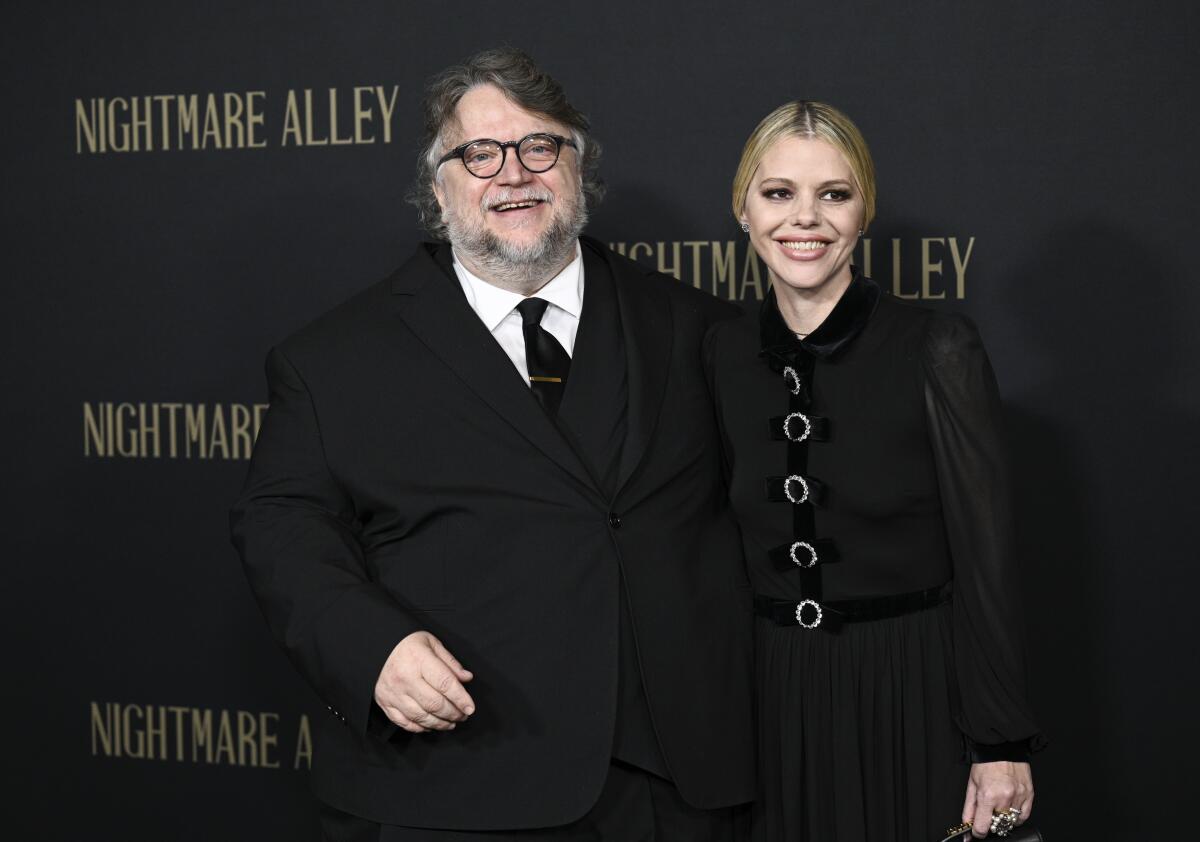
One valuable resource was the introduction to the 2010 New York Review of Books edition of the novel — republished as a movie tie-in edition — featuring a foreword written by Nick Tosches, the writer best known for explorations of the underworld and demimondes, including his definitive 1992 biography of Dean Martin, “Dino: Living High in the Dirty Business of Dreams.” It was in Tosches’ essay that Morgan and Del Toro discovered the existence of a 1959 letter written by Gresham in which he said, “Stan is the author.”
“There was a merging of him in Stanton,” said Morgan.
The novel of “Nightmare Alley” was a success, one that Gresham would never match, even as he published other books. Having been diagnosed with cancer, he would take his own life in 1962.
“We also felt this was very timeless, the novel,” Del Toro said. “The novel is so absolutely an indictment of the American dream, the capitalist ideals.”
“When you’re trying to seek yourself or look into yourself, whether it be through psychoanalysis, the tarot, religion, often when you do face yourself, you don’t like what you see,” said Morgan. “And you might be terrified, or you might come to a comfort knowing that you faced that terror — you faced what you are running from. Which I felt was in the novel, that this character is always running from something.”
“I think Gresham came to a very disillusioned conclusion about the way the system is rigged,” said Del Toro. “There’s a great line in the middle of the book — I’m going to misquote it — but he says, ‘What kind of God would create this slaughterhouse of a world?’ And I think that level of unguarded disillusionment is as inspiring as a romantic streak for sure. It was really inspiring to see somebody wearing that disillusionment on his sleeve so clearly.”
Morgan was on set for most of production to contribute new ideas as needed. And also because, as Del Toro put it, “We created the screenplay together. She would be watching the director, who was a barbarian, with our work and say, ‘Hey, that’s important. Can we preserve it?’”
“Which was nice,” Morgan said. “Because, you know, writers aren’t usually on the set.”
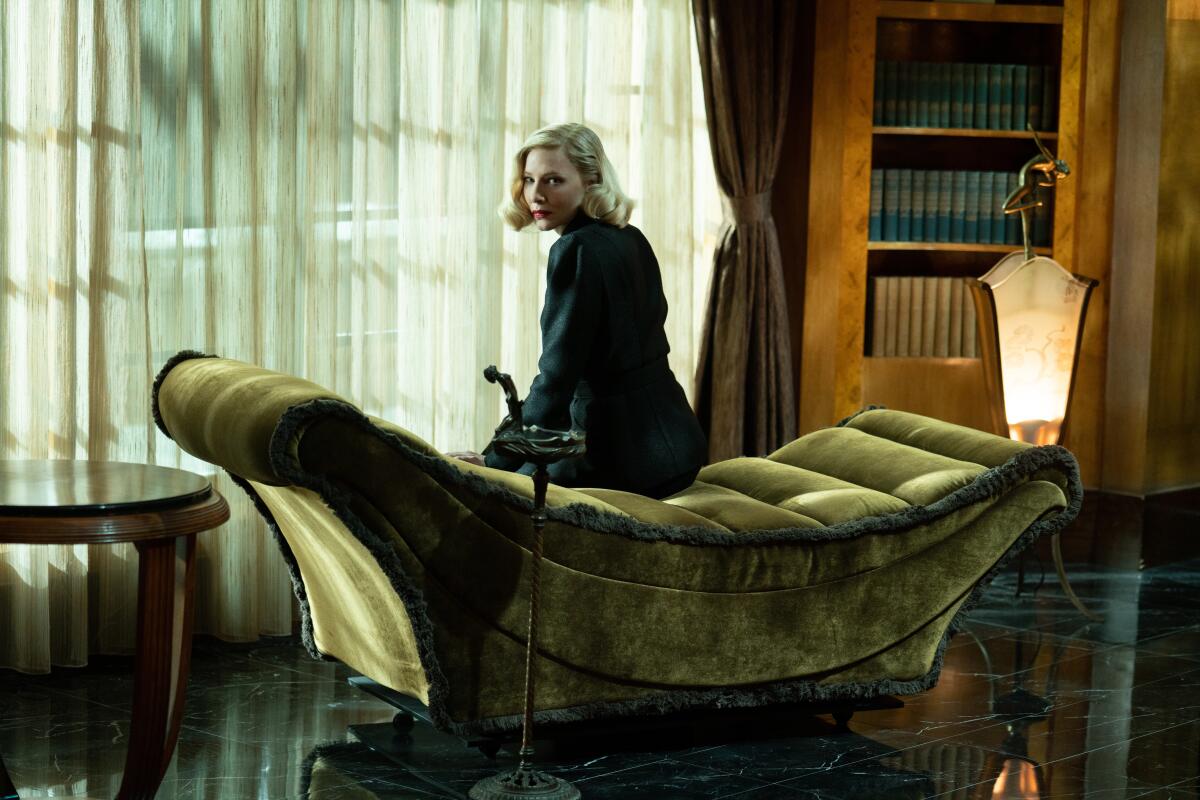
The term “noir” commonly brings to mind visual motifs of serrated light through slatted blinds or light reflecting in streets slick with rain. For Del Toro’s “Nightmare Alley,” the film isn’t so much noir in its visual style — though there are plenty of beautiful clothes, stylish interiors and stylized lighting — as it is in its soul, its dark, pitiless heart.
“Noir often is put in a category too much, as if it’s supposed to be one thing,” said Morgan. “It could mean a lot of things.”
“I think there’s a very, very reductionist view of noir being a series of visual clichés and mood. And it’s not about mood,” said Del Toro. “In the way I understand it myself, it is a literature of disappointment, it is American existentialism. It is a literature that shows that, between the haves and the have-nots, the only way to break that barrier, which would be class in English literature, is you break it through violence. If you’re reading Jane Austen, you break it through marriage. If you’re reading noir, you break it through violence or transgression. And it is really moving, that is a very incarnate look at a country that was founded on these pastoral ideas and has now had a literal reckoning with urban and industrial life and the brutality that it entitles.”
Throughout a recent interview on a video call, as the two sat on a couch together, Morgan was tucked in the crook of Del Toro’s arm so they could both be on a single screen. The two watched a lot of movies together while working on the screenplay, noting how they purposefully stayed away from the greatest hits of film noir like “Out of the Past,” “The Maltese Falcon” or “Laura.”
Soon they began sweetly rattling off movies they did watch, trying to recall their favorite movies with actor Charles McGraw (those would be “The Threat” and “Loophole”) or debating the true nature of a character played by Lizabeth Scott in “Too Late for Tears,” when Del Toro noted, “We’re turning into the lost interview from ‘When Harry Met Sally.’”
Del Toro jokingly said that the two of them “became a two-headed monster” as they were working on the project. First, they transcribed all the dialogue from the original novel. Then they worked separately, trading pages back and forth and editing each other’s work until they came together to write side-by-side. For a relatively new couple, to spend their time submerging themselves in Stanton Carlisle’s dark despair might seem an uncomfortable place to be.
“There is something when you’re looking at such dark material, it is good to talk about these things,” said Morgan. “So it’s good to open up and share your fears and share things that you relate to and to see the humanity in Stanton. We sort of merged it with William Lindsay Gresham, with our own lives and with people that we’ve known.”
“As an artist, you feel there is a possibility that there is a tyranny of nice. Nice can become as oppressive as anything else,” said Del Toro. “And you just convulse. We are, after all, reacting to what’s in the atmosphere, and sometimes you react with a poem, and sometimes you react with a gut punch.”
More to Read
Only good movies
Get the Indie Focus newsletter, Mark Olsen's weekly guide to the world of cinema.
You may occasionally receive promotional content from the Los Angeles Times.
